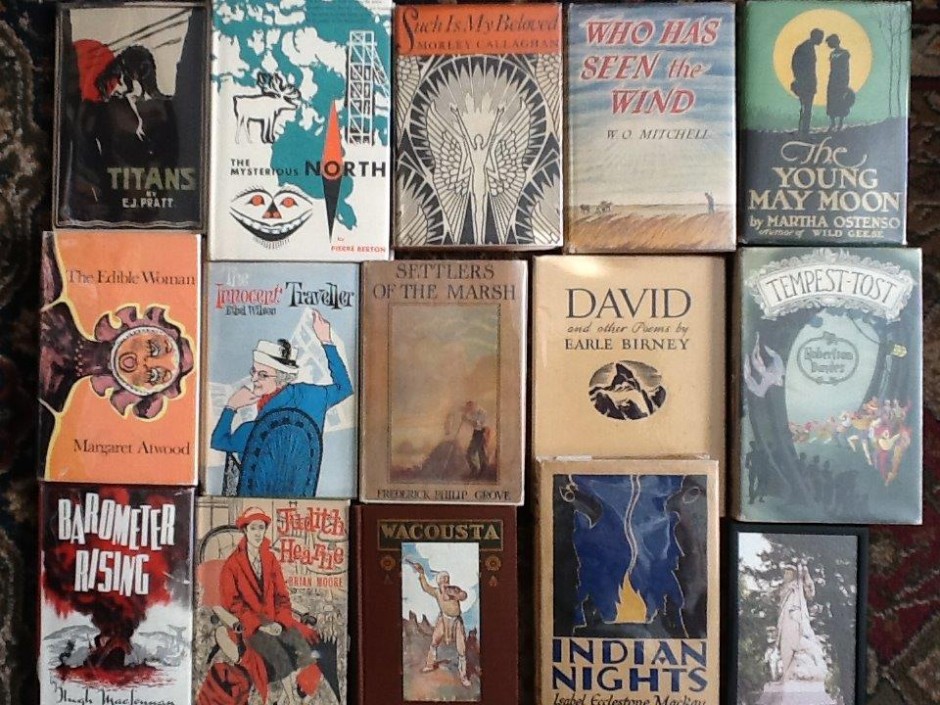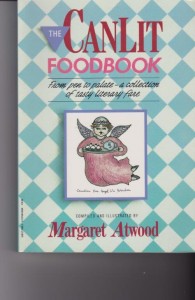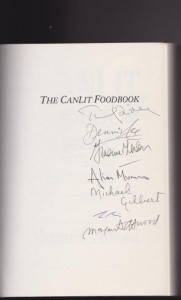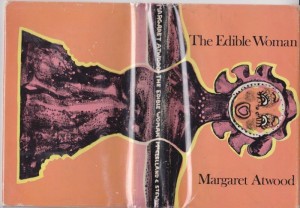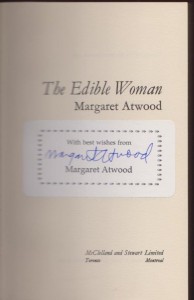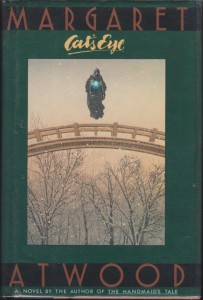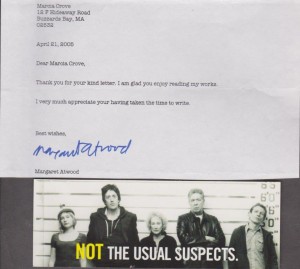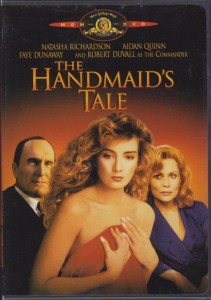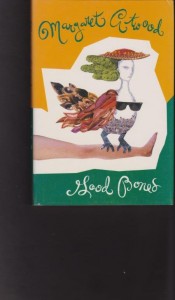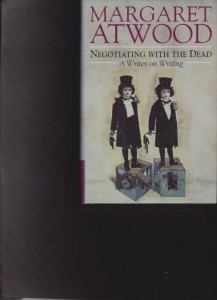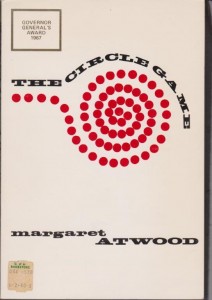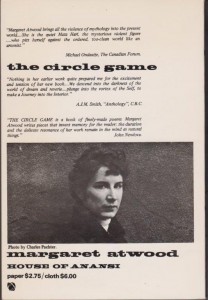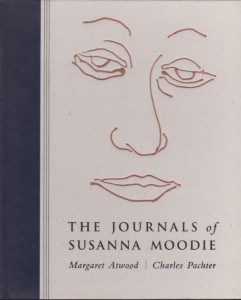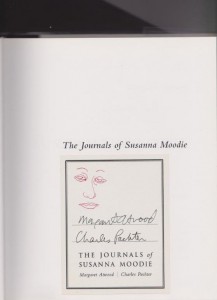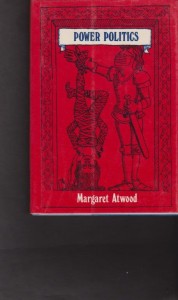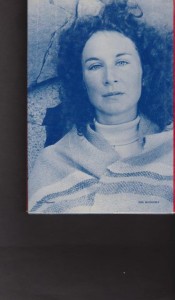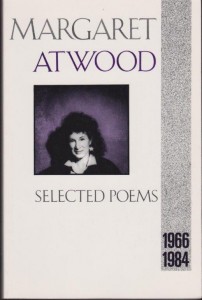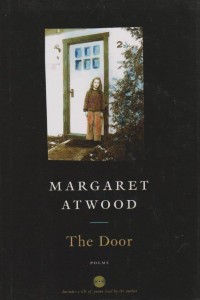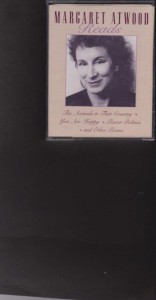(rare signed by 7 authors; Totem, 1987 pb; design: Dragon’s Eye Press)
(signed 1969 McClelland & Stewart dj; design: Charles Pachter)
(left: 1989 Doubleday dj; cover: Fred Marcellino; right: laid-in signed letter reply, 2005, & promo bookmark)
(1990 MGM DVD; movie version of The Handmaid’s Tale)
(left: signed 1992 Coach House; illustration–Atwood, design: Stephanie Power, Reactor; right: signed 2002 Cambridge U dj; painting: “Mortality Cubes”, 1997 by Marianna Gartner)
(1967 House of Anansi pb; design & photo; Charles Pachter)
(double-signed Macfarlane Walter & Ross, 1997 dj)
(Harper & Row, 1971 dj; jacket: William Kimber)
(left: 1990 Oxford U Press pb; photo: Deborah Samuel; design: Marie Bartholomew; centre: 2007 Houghton Mifflin, U.S. dj with CD; photo: Atwood; design: C.S. Richardson; right: 1977 HarperCollins cassette; photo: Laurence Acland; design: Margo Barooshian)
Margaret (Eleanor) Atwood (1939-) is arguably, along with Alice Munro, one of our best-known fiction writers internationally. She has written 17 novels and 20 volumes of poetry and has become our most obvious prolific and successful modern writer. Born in Ottawa, she spent her early life in Northern ON and PQ, growing up in a bush lifestyle which definitely ‘marked’ her imagination and sensibility.
As a youth and young woman, she also worked as a cashier, waitress, and summer camp counsellor, and began her writing career at U of T studying with Northrop Frye and writing, with friend Dennis Lee, for Acta Victoriana. Her acclaimed works include The Edible Woman (1969), The Handmaid’s Tale (1985), Alias Grace (1996), The Penelopiad (2005), and Oryx and Crake (2003–a GG winner for fiction). Always an experimental individual, she invented the Long Pen solution to deal with book tour demands of interminable book signings.
Personally, I’ve always found her poetry to be more intriguing going back to the first book of hers my wife and I bought at U of A in the ’60s just after she had taught there–The Circle Game–the 1966 GG winner for poetry. Recursively, she has published volumes of poetry between her novels, which I think tells you something about where her writing heart may be genre-wise. In 2002, when I was selecting one Canadian poet to feature in depth for Inside Poetry, 2nd ed. (Harcourt), I chose her and several of her poems. (If you’re curious, Margaret Avison was my 2nd choice; only she had a sufficiently major comparable quality canon to choose from.)
